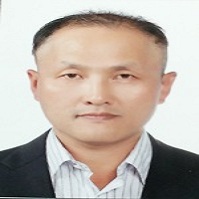
Dr. WooKoung Lee
Root Hair Transplantation Center, South Korea
Title: The visualization of hair follicles by means of Ultrasound scanner and Follicoscope (using 640nm red visible with polarized light Filter) to reduce damage for hair follicles during FUE (follicular unit extraction
Biography
Biography: Dr. WooKoung Lee
Abstract
Follicular unit extraction has many advantages which is minimal scar, quicker recovery time but definitely have disadvantages as well. One of them include potential for high hair follicle
transection rate. The disadvantage is mostly due to blind harvesting technique. Thus we had been looking for imaging methods which make visible technique possible. One of them is the ultrasound scanner which is 22MHz in frequency and shows structures within the dermis. Through it we found out that there were angle differences between hair shaft out of the skin and hair follicle in the occipital scalp. The results were in 20.8-40.3 degree range and 12.8 degree of average. In addition there were significant differences in the average follicle angle depending on the area of occipital region. Therefore we employed its data in order to reduce transection rate for graft. But despite ultrasound’s great ability, we was not able to harvest the grafts simultaneously while seeing the hair follicle. So we were searching for something to be capable of resolving the problem and lights gave us good idea. We made the first attempt with the NIR(one kind of lights which is 700-2500nm in wavelength). We were able to identify the hair follicles, but felt a need for further improvement. The most suitable amount of melanin to be observed in hair follicles was 640 nm red visible. We were able to identify hair follicles using 640nm red visible light with PL filter. As a result, we can harvest the grafts while looking at the hair follicles through the monitor simultaneously.
Conclusion: While harvesting the hair follicle, we always have potential for transection of it when just depend on blind technique. We have been making much effort to lower transection rate of the follicle and at last we found out Follicoscope and ultrasound scanner. They consequently make visible technique possible.

